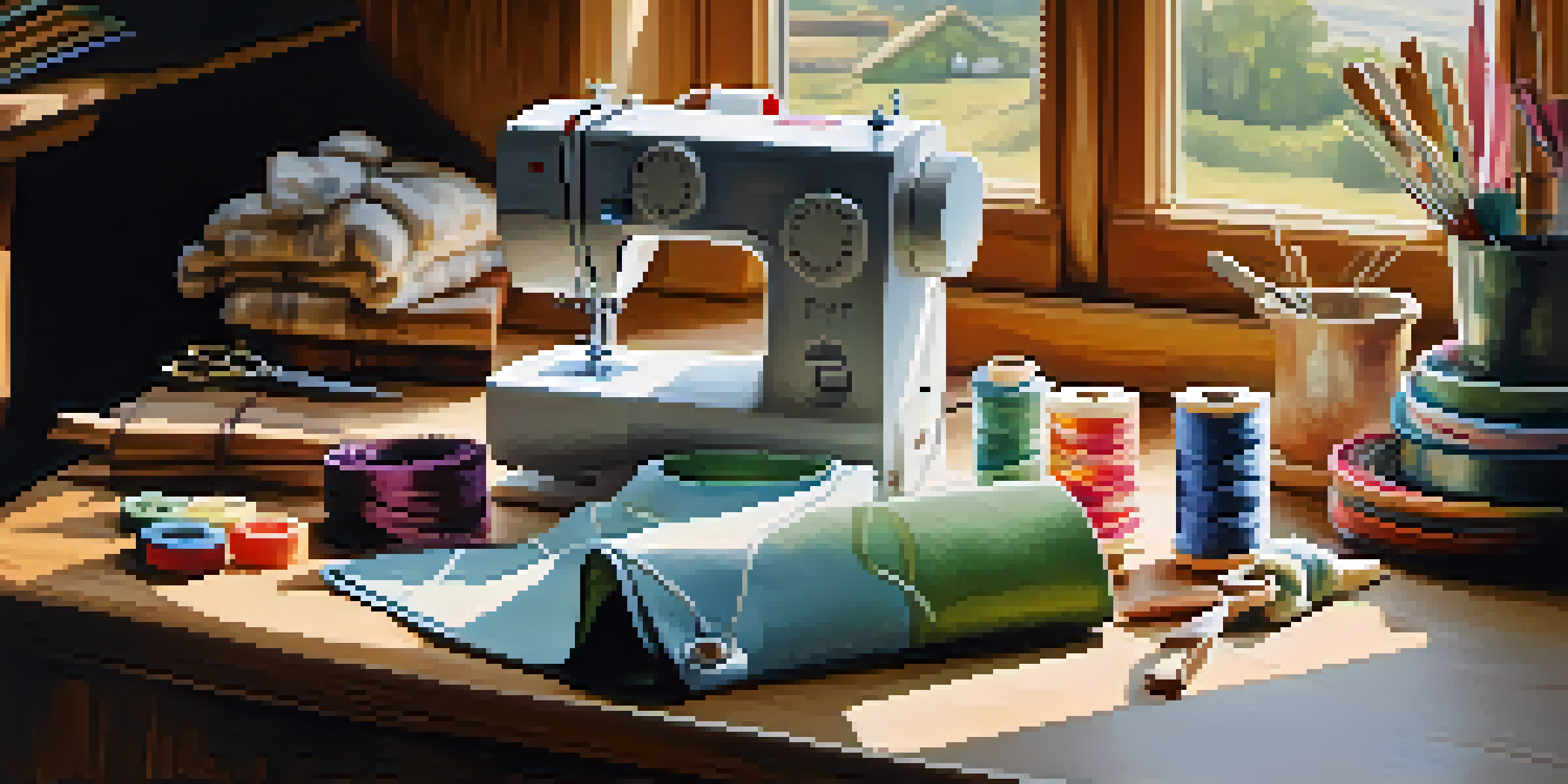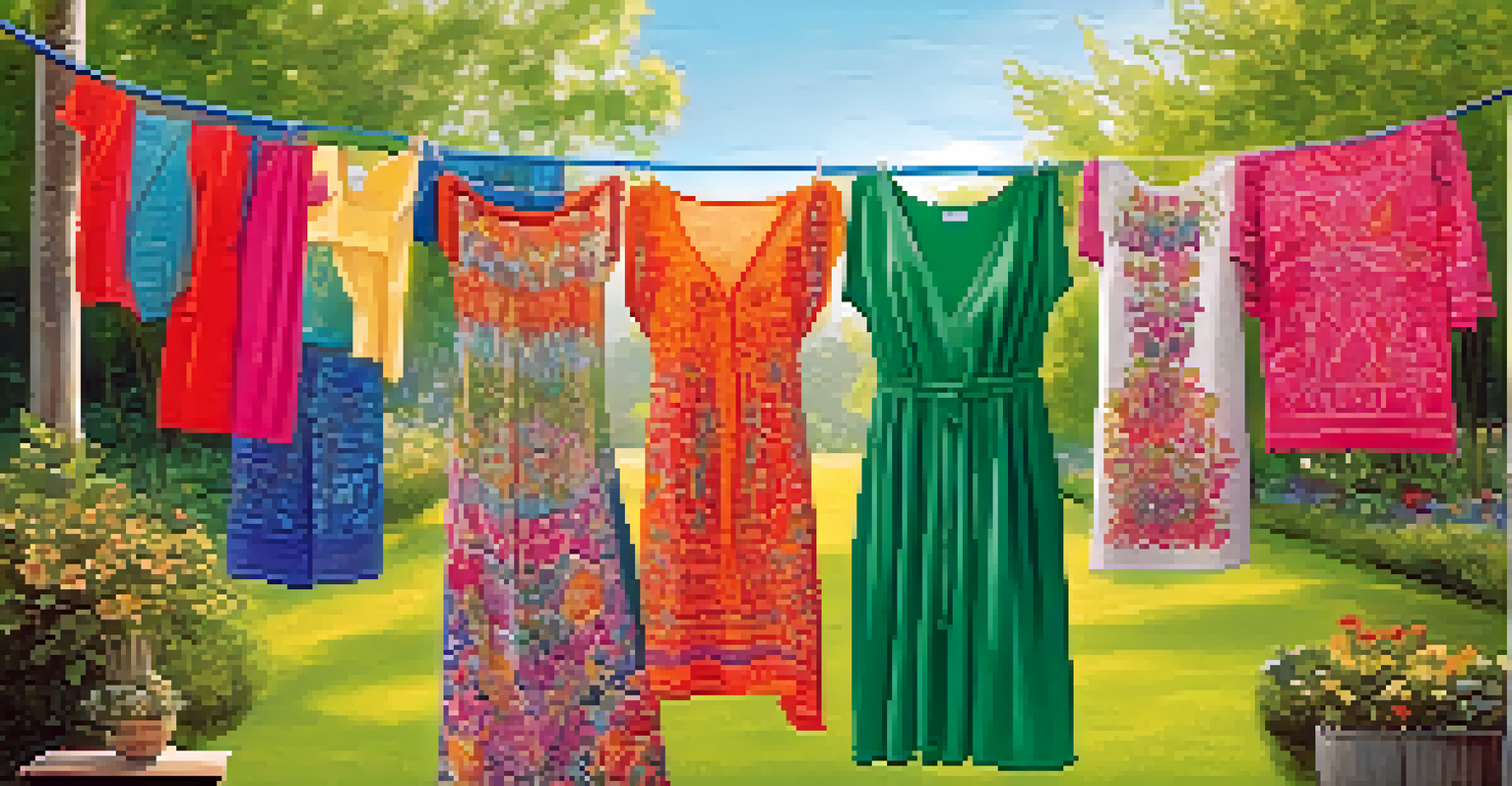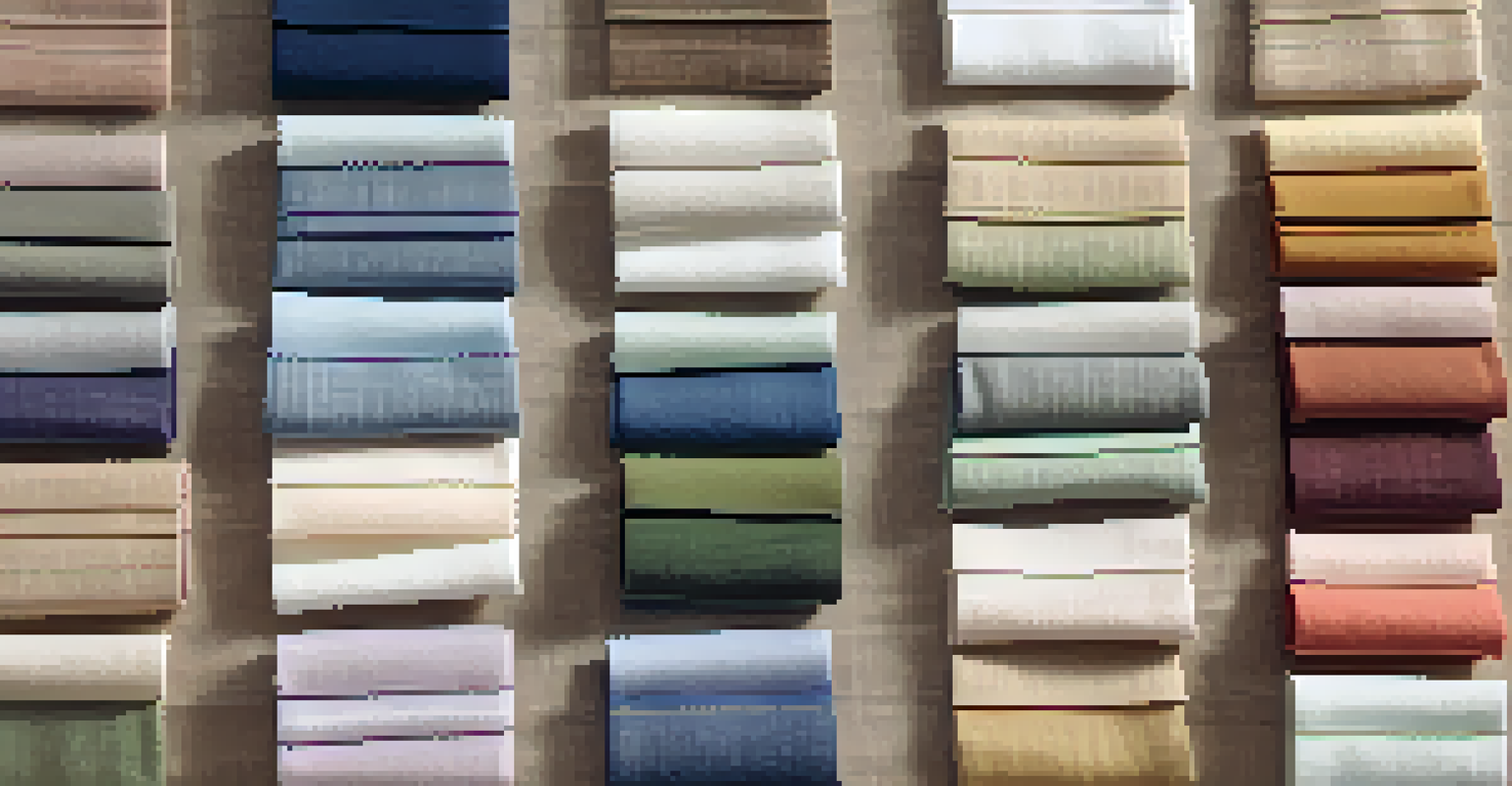Sustainable Sewing: Eco-Friendly Fabric Choices

Understanding Sustainable Sewing and Its Importance
Sustainable sewing focuses on creating garments and items that minimize environmental impact. This practice is essential in a world where fast fashion contributes significantly to pollution and waste. By choosing eco-friendly materials, sewers can play a vital role in promoting sustainability in the fashion industry.
The greatest threat to our planet is the belief that someone else will save it.
The importance of sustainable sewing extends beyond just fabric choices; it encompasses the entire lifecycle of a garment. From sourcing materials to the production process, every step influences the environment. By making conscious decisions, we can support a healthier planet and a more ethical fashion industry.
Moreover, sustainable sewing fosters creativity and individuality. When we prioritize eco-friendly materials, we often discover unique fabrics and techniques, allowing for personal expression in our creations. This shift not only benefits the environment but also enriches our crafting experience.
The Benefits of Using Eco-Friendly Fabrics
Choosing eco-friendly fabrics offers numerous benefits, both for the environment and the maker. These materials are often produced with less harmful chemicals, promoting a safer working environment for those involved in their creation. This means that your sewing projects can be not only beautiful but also ethically sound.

Additionally, eco-friendly fabrics usually boast higher durability compared to their conventional counterparts. This durability translates to longer-lasting garments, reducing the need for frequent replacements, which ultimately lessens waste. By investing in quality materials, you're also contributing to a more sustainable fashion cycle.
Sustainable Sewing Reduces Waste
By choosing eco-friendly materials and practices, sewers can significantly minimize their environmental impact and combat the issues caused by fast fashion.
Moreover, using sustainable fabrics can enhance the overall experience of sewing. Many eco-friendly options, such as organic cotton or Tencel, are soft and pleasant to work with. This comfort makes the sewing process enjoyable, leading to happier crafters and beautifully finished projects.
Exploring Organic Cotton: A Popular Choice
Organic cotton stands out as a popular choice among eco-conscious sewers. Unlike conventional cotton, which often relies on harmful pesticides and fertilizers, organic cotton is grown without these chemicals, resulting in a healthier ecosystem. This makes it a fantastic option for anyone looking to sew sustainably.
Fashion is the armor to survive the reality of everyday life.
Not only is organic cotton better for the environment, but it also feels great against the skin. It is soft, breathable, and perfect for various projects, from clothing to home decor. This versatility makes it a staple in many sustainable sewing kits.
Furthermore, supporting organic cotton farming helps promote sustainable agricultural practices. By choosing this fabric, you’re not only creating beautiful items but also contributing to a movement that values the earth and its resources. It's a win-win situation for both sewers and the planet.
Bamboo Fabric: Eco-Friendly and Versatile
Bamboo fabric is another eco-friendly option gaining popularity in the sewing community. It's derived from the fast-growing bamboo plant, which requires minimal water and no pesticides to thrive. This makes it an excellent sustainable alternative for various sewing projects.
One of the standout features of bamboo fabric is its natural breathability and moisture-wicking properties. This makes it ideal for clothing, especially in warmer climates. Imagine wearing a lightweight, breathable garment that feels as good for the environment as it does on your skin!
Eco-Friendly Fabrics Enhance Projects
Using materials like organic cotton, bamboo, and Tencel not only promotes sustainability but also improves the overall experience and quality of sewing projects.
Additionally, bamboo fabric is biodegradable, meaning it won't linger in landfills for years like synthetic fabrics. By incorporating bamboo into your sewing projects, you contribute to reducing waste and supporting sustainable practices, all while enjoying the luxurious feel of this unique material.
Tencel: The Sustainable Superstar of Fabrics
Tencel, made from sustainably sourced wood pulp, is often heralded as a sustainable superstar in the fabric world. This fiber is produced through a closed-loop process, which means that the solvents used in its production are recycled and reused, minimizing waste. This innovative approach makes Tencel a fantastic choice for eco-conscious sewers.
Known for its silky feel and drape, Tencel is perfect for a variety of projects, from flowing dresses to soft pajamas. Its luxurious texture often surprises those who are new to it, making it an appealing option for both experienced and novice sewers alike. Plus, it’s biodegradable and compostable, meaning your creations can return to the earth at the end of their life cycle.
In addition to its environmental benefits, Tencel is also resistant to wrinkles and creasing. This makes it an easy-care fabric, allowing you to spend more time enjoying your creations and less time worrying about upkeep. With Tencel, sustainability and style go hand in hand.
Recycled Fabrics: Giving New Life to Old Materials
Recycled fabrics are a fantastic way to incorporate sustainability into sewing projects. These materials are made from post-consumer waste, such as plastic bottles or old garments, giving them a second chance at life. By choosing recycled fabrics, you can contribute to reducing landfill waste and promoting a circular economy.
Many recycled fabrics are surprisingly high-quality and can be used for a variety of projects. From stylish bags to cozy blankets, the possibilities are endless. Plus, the unique textures and patterns found in recycled materials can add a distinctive flair to your creations, setting them apart from mass-produced items.
Recycled Fabrics Promote Creativity
Incorporating recycled fabrics into sewing encourages resourcefulness and innovation, allowing for unique creations while supporting a circular economy.
Using recycled fabrics not only benefits the environment but also encourages a mindset of creativity and resourcefulness. It challenges us to think outside the box and find innovative ways to repurpose materials, leading to one-of-a-kind projects that tell a story. In this way, sewing becomes not just a craft, but a meaningful practice that contributes to sustainability.
Tips for Sourcing Eco-Friendly Fabrics
Finding eco-friendly fabrics can seem daunting, but with a few tips, you can make the process enjoyable and straightforward. Start by researching local fabric stores that prioritize sustainability or specialize in organic and recycled materials. Many online retailers also focus on eco-friendly options, making it easier to shop from the comfort of your home.
When shopping, look for certifications such as GOTS (Global Organic Textile Standard) or OEKO-TEX, which ensure that the fabrics meet specific environmental and social criteria. These labels can guide you in making informed choices, ensuring that your fabric selections align with your sustainability goals.

Don't hesitate to ask questions when sourcing fabrics. Engaging with store owners or manufacturers about their practices can provide valuable insights into the sourcing and production processes. Building these connections not only enhances your fabric knowledge but also supports businesses dedicated to sustainability.